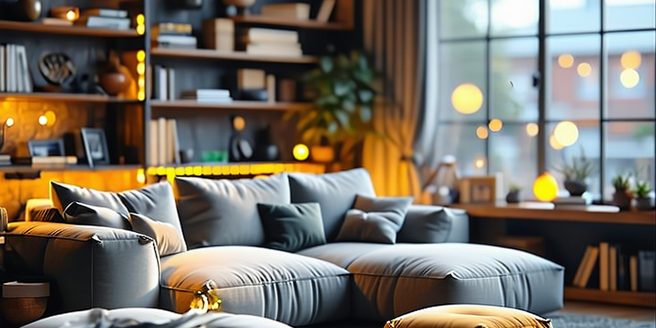Small Apartment Design Ideas

Maximizing Space with Multi-Functional Furniture
Selecting multi-functional furniture is an intelligent choice for compact living spaces. A sofa that converts into a bed, a dining table with folding leaves, or an ottoman with storage can significantly enhance functionality without taking up additional room. These pieces often serve dual purposes, offering practical solutions and optimizing space. Multi-functional furniture can transform living areas with limited square footage into versatile environments, providing flexibility in how one uses their space. When selecting pieces, look for sturdy construction, sleek designs that blend well with your decor, and neutral colors to maintain a sense of openness. Incorporating these elements will allow for easy rearrangement and adaptation to different activities, ensuring that every piece of furniture adds value, utility, and style to your living arrangements.
Effective Storage Solutions for Small Spaces
When living in a small apartment, creatively utilizing every inch of space is crucial. Implementing effective storage solutions can dramatically improve organization and accessibility. Consider vertical storage options like tall shelving units or wall-mounted racks to capitalize on unused wall space. Under-bed storage boxes and multi-tiered shoe racks are perfect for reducing clutter and keeping valuables tucked away yet easily reachable. Custom cabinetry, with options such as roll-out drawers and pull-out pantry shelves, offer not only significant space savings but also a sleek appearance. Decorative baskets and ottomans with hidden compartments can add aesthetic appeal and practical storage. By efficiently organizing essentials, you not only create a cleaner living space but also foster a more peaceful and productive environment.
Choosing the Right Color Palette for Openness
The right color palette can dramatically affect the perception of space in a small apartment, making it feel more open and inviting. Light, neutral colors such as whites, beiges, and soft grays reflect more light than dark shades, enhancing the sense of openness. Accenting with carefully chosen colors such as pastel blues or greens can introduce warmth without overwhelming the senses. Using a monochromatic color scheme can create a seamless flow between rooms, while strategic use of accent walls draws attention to particular features. Mirrors paired with complementary colors can further this effect by adding depth and increasing light reflection. Consider the balance and contrast among chosen hues to ensure the space remains harmonious, allowing color to subtly curate the desired ambiance.
Lighting Ideas to Enhance Room Ambiance
Lighting plays a pivotal role in setting the ambience in confined living spaces. To enhance room ambiance, consider using a blend of natural and artificial lighting. Large windows without heavy draperies can invite natural light, which opens up space. Layered lighting includes ambient, task, and accent lighting for functionality and mood-setting. Integrating dimmable overhead lights allows flexibility for creating different atmospheres. Use spotlights or under-cabinet lighting to highlight specific areas or features. Incorporating LED strips in shelves or under furniture adds a subtle glow. Choosing warm light bulbs over cooler ones can create a cozy, inviting environment. Floor lamps with adjustable arms can service multiple needs from reading to casual gatherings. Effective lighting design not only supports aesthetic qualities but also increases room clarity and functional utility.
Creating Zones in an Open-Plan Layout
In open-plan layouts, defining distinct zones can promote both functionality and an organized look. Use furniture strategically to create separate areas; for instance, a sofa can delineate the living room from the dining area. Rugs are another effective tool for delineation, adding texture and demarcating boundaries without structural changes. Open shelving or low-profile dividers provide partial barriers while maintaining sightlines. Each zone should have a distinct purpose but be tied together through a harmonious color palette and coordinated decor elements. Lighting can also help define zones; pendant lights might illuminate dining areas while floor lamps offer cozy corner lighting. Ensure fluid traffic patterns without obstructing pathways to maintain continuity and ease of movement. This thoughtful layout promotes usability, visual interest, and multifunctional space management.
Incorporating Greenery in Compact Living Areas
Integrating plants into small apartments can breathe life and color into compact spaces. Opt for small or medium-sized plants that suit your available area, considering options like succulents, which require minimal care and space. Vertical gardens or wall-mounted planters maximize green space without using precious floor area, while plants like hanging ferns or trailing ivy add lushness from above. Consider stylish planters or pots that complement your decor and contribute to the interior’s overall look. Plants such as snake plants and spider plants are excellent for improving air quality and thrive in various lighting conditions. Balancing greenery on shelves or windowsills can create a natural, vibrant atmosphere. Carefully placed plants will enhance ambiance, improve air quality, and bring a touch of nature into the heart of city living.